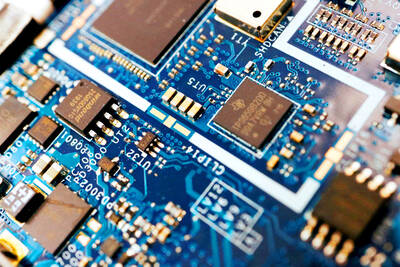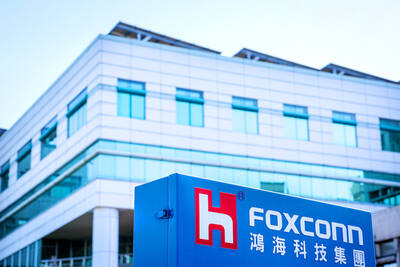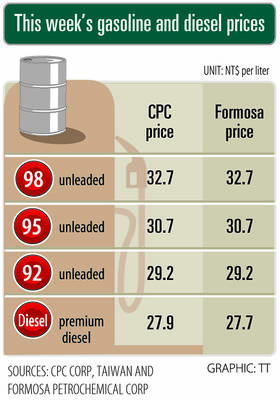As of last week, the value of urban renewal projects in Taipei and New Taipei City totaled NT$85.3 billion (US$2.77 billion) for the year and the figure is bound to exceed NT$100 billion for the year as the projects become a main source of new construction, despite long construction times, the Chinese-language Housing Monthly (住展雜誌) said yesterday.
As of Wednesday last week, there were 39 urban renewal projects in the two cities, up from 31 in all of last year, the magazine said.
“The rest of the year might see an additional NT$25 billion worth of renewal projects, raising the overall volume for the year to NT$110 billion, with the Diamond Tower project on the site of a former public housing complex among those not yet included,” Housing Monthly research manager Ho Shih-chang (何世昌) said.
The volume will soar if Sanyuan Group (三圓建設) and Lung Ling Development Co (龍麟建設), which won bidding for the Diamond Tower contract, launch the project by the end of this year as planned, Ho said.
The Diamond Tower project is for two high-rise, mixed-use buildings on 1,545 ping (5,107m2) of land near the Zhongxiao-Fuxing MRT Station in Taipei.
The Ministry of Finance, which owns 37.36 percent of the land, would own one building and set an example of how the government can guide private money to public construction without spending a dime, ministry officials have said.
Renewal projects have gained force since 2013, with their value more than doubling in 2016 and rising above NT$100 billion last year, Ho said.
The pace might continue to increase due to a lack of undeveloped land in Taipei, which is why the capital accounts for more than 30 percent of renewal projects nationwide, he said.
Taipei’s Zhongshan District (中山) has seen the most investment, with projects there having a combined value of NT$16.2 billion, followed by Zhongcheng District (中正) with NT$11.1 billion, Beitou District (北投) with NT$8.9 billion and Wanhua District (萬華) with NT$8.4 billion, the magazine said.
New Taipei City’s Jhonghe District (中和) is next with NT$7.6 billion, it said.
Beitou, Wanhua and Jhonghe are not considered central or popular and are therefore easier to integrate, Ho said, adding that it took 22 years to overcome resistance among residents over the Diamond Tower project.
Apartments in renewal projects tend to have higher asking prices, leading to a decline in transactions in recent years, Ho said.
The situation has shown improvement this year after builders shifted focus from big to small apartments and cut prices to facilitate transactions, he said.
A stable economy and low interest rates lend support to the property market, he said.

GREAT SUCCESS: Republican Senator Todd Young expressed surprise at Trump’s comments and said he expects the administration to keep the program running US lawmakers who helped secure billions of dollars in subsidies for domestic semiconductor manufacturing rejected US President Donald Trump’s call to revoke the 2022 CHIPS and Science Act, signaling that any repeal effort in the US Congress would fall short. US Senate Minority Leader Chuck Schumer, who negotiated the law, on Wednesday said that Trump’s demand would fail, while a top Republican proponent, US Senator Todd Young, expressed surprise at the president’s comments and said he expects the administration to keep the program running. The CHIPS Act is “essential for America leading the world in tech, leading the world in AI [artificial

DOMESTIC SUPPLY: The probe comes as Donald Trump has called for the repeal of the US$52.7 billion CHIPS and Science Act, which the US Congress passed in 2022 The Office of the US Trade Representative is to hold a hearing tomorrow into older Chinese-made “legacy” semiconductors that could heap more US tariffs on chips from China that power everyday goods from cars to washing machines to telecoms equipment. The probe, which began during former US president Joe Biden’s tenure in December last year, aims to protect US and other semiconductor producers from China’s massive state-driven buildup of domestic chip supply. A 50 percent US tariff on Chinese semiconductors began on Jan. 1. Legacy chips use older manufacturing processes introduced more than a decade ago and are often far simpler than

Hon Hai Precision Industry Co (鴻海精密) yesterday said that its research institute has launched its first advanced artificial intelligence (AI) large language model (LLM) using traditional Chinese, with technology assistance from Nvidia Corp. Hon Hai, also known as Foxconn Technology Group (富士康科技集團), said the LLM, FoxBrain, is expected to improve its data analysis capabilities for smart manufacturing, and electric vehicle and smart city development. An LLM is a type of AI trained on vast amounts of text data and uses deep learning techniques, particularly neural networks, to process and generate language. They are essential for building and improving AI-powered servers. Nvidia provided assistance

Gasoline and diesel prices this week are to decrease NT$0.5 and NT$1 per liter respectively as international crude prices continued to fall last week, CPC Corp, Taiwan (CPC, 台灣中油) and Formosa Petrochemical Corp (台塑石化) said yesterday. Effective today, gasoline prices at CPC and Formosa stations are to decrease to NT$29.2, NT$30.7 and NT$32.7 per liter for 92, 95 and 98-octane unleaded gasoline respectively, while premium diesel is to cost NT$27.9 per liter at CPC stations and NT$27.7 at Formosa pumps, the companies said in separate statements. Global crude oil prices dropped last week after the eight OPEC+ members said they would